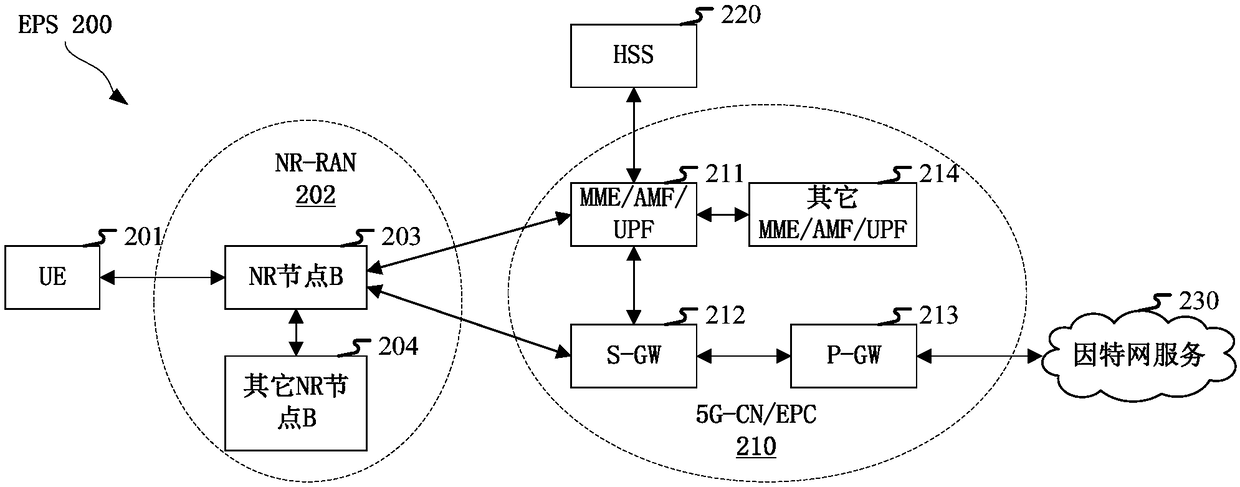Methods and apparatuses in user equipment and base station for wireless communication
A technology of wireless communication and user equipment, which is applied in the direction of devices dedicated to receivers, transmission modification based on link quality, pilot signal allocation, etc., which can solve the problems that DMRS cannot guarantee transmission performance, etc.
- Summary
- Abstract
- Description
- Claims
- Application Information
AI Technical Summary
Problems solved by technology
Method used
Image
Examples
Embodiment 1
[0065] Embodiment 1 illustrates the flow charts of the first signaling and the second signaling, as shown in the attached figure 1 shown.
[0066] In Embodiment 1, the user equipment in this application first receives the first signaling, then receives the second signaling, and then operates the first wireless signal and the second wireless signal respectively in the first time-frequency resource; the The first wireless signal and the second wireless signal occupy a first resource unit set and a second resource unit set respectively; the first signaling is used to determine whether the second signaling includes a first field, and the first signaling A field is used to determine that the target resource unit set belongs to the first resource unit set or the second resource unit set; assuming that the first time-frequency resource includes reference signals sent by K antenna ports, the The set of resource units occupied by the reference signals sent by the K antenna ports in th...
Embodiment 2
[0105] Embodiment 2 illustrates the schematic diagram of network architecture, as attached figure 2 shown.
[0106] Embodiment 2 illustrates a schematic diagram of a network architecture according to the present application, as attached figure 2 shown. figure 2 It is a diagram illustrating NR 5G, LTE (Long-Term Evolution, long-term evolution) and LTE-A (Long-Term Evolution Advanced, enhanced long-term evolution) system network architecture 200 . The NR 5G or LTE network architecture 200 may be referred to as an EPS (Evolved Packet System, Evolved Packet System) 200 by some other suitable term. EPS 200 may include one or more UE (User Equipment, User Equipment) 201, NG-RAN (Next Generation Radio Access Network) 202, EPC (Evolved PacketCore, Evolved Packet Core) / 5G-CN (5G-Core Network, 5G core network) 210, HSS (Home Subscriber Server, home subscriber server) 220 and Internet service 230. The EPS may be interconnected with other access networks, but these entities / interfa...
Embodiment 3
[0114] Embodiment 3 shows a schematic diagram of an embodiment of a wireless protocol architecture of a user plane and a control plane according to the present application, as shown in the attached image 3 shown.
[0115] attached image 3 is a schematic diagram illustrating an embodiment of a radio protocol architecture for a user plane and a control plane, image 3The radio protocol architecture for user equipment (UE) and base station equipment (gNB or eNB) is shown in three layers: layer 1, layer 2 and layer 3. Layer 1 (L1 layer) is the lowest layer and implements various PHY (Physical Layer) signal processing functions. The L1 layer will be referred to herein as PHY 301 . Layer 2 (L2 Layer) 305 is above PHY 301 and is responsible for the link between UE and gNB through PHY 301 . In the user plane, the L2 layer 305 includes MAC (Medium Access Control, Media Access Control) sublayer 302, RLC (Radio LinkControl, Radio Link Layer Control Protocol) sublayer 303 and PDCP (...
PUM
 Login to View More
Login to View More Abstract
Description
Claims
Application Information
 Login to View More
Login to View More - R&D
- Intellectual Property
- Life Sciences
- Materials
- Tech Scout
- Unparalleled Data Quality
- Higher Quality Content
- 60% Fewer Hallucinations
Browse by: Latest US Patents, China's latest patents, Technical Efficacy Thesaurus, Application Domain, Technology Topic, Popular Technical Reports.
© 2025 PatSnap. All rights reserved.Legal|Privacy policy|Modern Slavery Act Transparency Statement|Sitemap|About US| Contact US: help@patsnap.com



